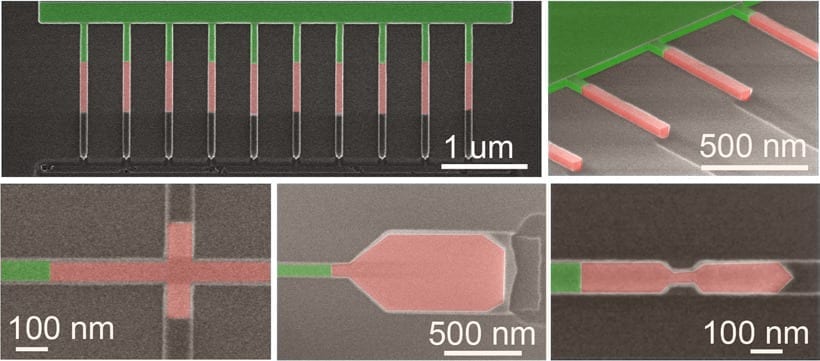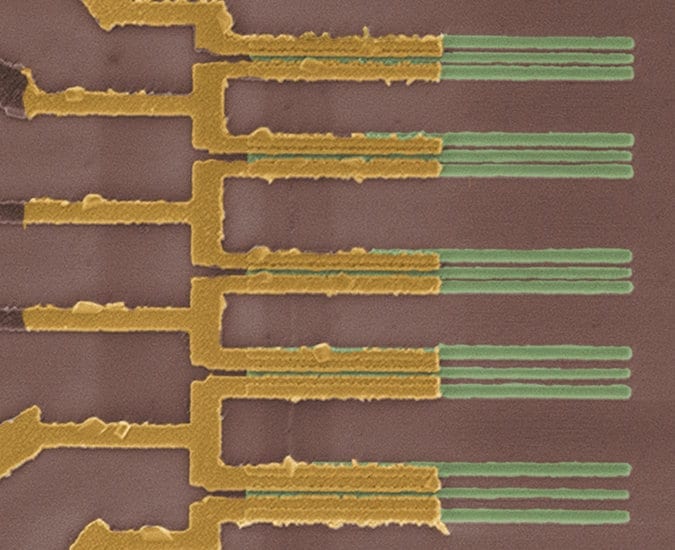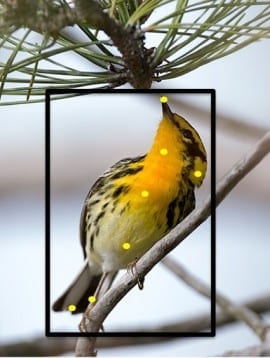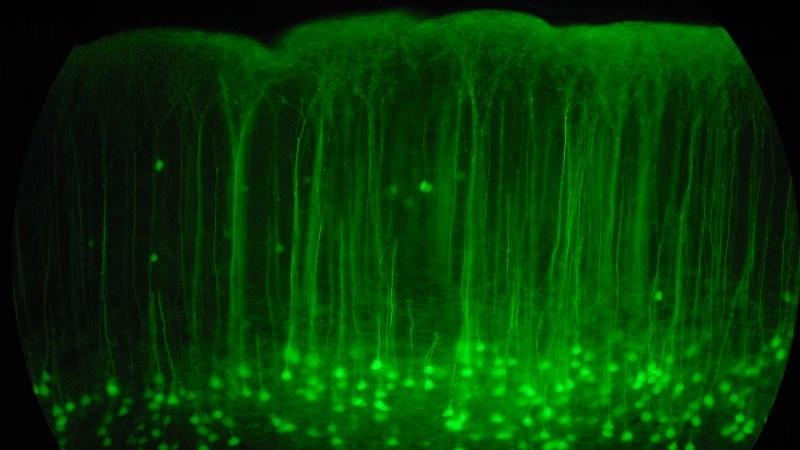
CREDIT: H. Schmid/IBM
A team of IBM researchers in Zurich, Switzerland, with support from colleagues in Yorktown Heights, N.Y., has developed a relatively simple, robust and versatile process for growing crystals made from compound semiconductor materials that will allow them be integrated onto silicon wafers—an important step toward making future computer chips that will allow integrated circuits to continue shrinking in size and cost even as they increase in performance.
Appearing in Applied Physics Letters, the work may allow an extension to Moore’s Law, the famous observation by Gordon Moore that the number of transistors on an integrated circuit double about every two years. In recent years some in the industry have speculated that our ability to keep pace with Moore’s Law may become exhausted eventually unless new technologies come along that will lend it leash.
“The whole semiconductor industry wants to keep Moore’s Law going. We need better performing transistors as we continue down-scaling, and transistors based on silicon won’t give us improvements anymore,” said Heinz Schmid, a researcher with IBM Research GmbH at Zurich Research Laboratory in Switzerland and the lead author on the paper.
For consumers, extending Moore’s Law will mean continuing the trend of new computer devices having increasing speed and bandwidth at reduced power consumption and cost. The new technique may also impact photonics on silicon, with active photonic components integrated seamlessly with electronics for greater functionality.
How the work was done
The IBM team fabricated single crystal nanostructures, such as nanowires, nanostructures containing constrictions, and cross junctions, as well as 3-D stacked nanowires, made with so-called III-V materials. Made from alloys of indium, gallium and arsenide, III-V semiconductors are seen as a possible future material for computer chips, but only if they can be successfully integrated onto silicon. So far efforts at integration have not been very successful.
The new crystals were grown using an approach called template-assisted selective epitaxy (TASE) using metal organic chemical vapor deposition, which basically starts from a small area and evolves into a much larger, defect-free crystal. This approach allowed them to lithographically define oxide templates and fill them via epitaxy, in the end making nanowires, cross junctions, nanostructures containing constrictions and 3-D stacked nanowires using the already established scaled processes of Si technology.
“What sets this work apart from other methods is that the compound semiconductor does not contain detrimental defects, and that the process is fully compatible with current chip fabrication technology,” said Schmid. “Importantly the method is also economically viable.”
Read more: Futuristic components on silicon chips
The Latest on: Single crystal nanostructures
[google_news title=”” keyword=”Single crystal nanostructures” num_posts=”10″ blurb_length=”0″ show_thumb=”left”]
via Google News
The Latest on: Single crystal nanostructures
- Liquid crystal-integrated metasurfaces for an active photonic platformon May 1, 2024 at 1:26 pm
Liquid crystals can be categorized into nematic ... evolution of traditional optical components, comprising nanostructures meticulously arranged to enable precise control over light manipulation.
- Crystal-Optechon April 29, 2024 at 5:00 pm
Zhejiang Crystal-OpTech Co., Ltd is principally engaged in the manufacture, processing and sale of optoelectronic components. The Company's major products include precise optical thin film ...
- Flat optics revolutionize quantum light sources for enhanced communication and sensingon April 24, 2024 at 5:00 pm
Researchers have long sought to develop efficient, compact, and controllable sources of quantum light, such as entangled photon pairs and single photons. However, traditional approaches have relied on ...
- Crystal Rogers Disappearanceon April 19, 2024 at 2:26 pm
Earlier this month, the Office of the Attorney General appointed Shane Young as the special prosecutor to assist in cases of the deaths of Jason Ellis and Tommy Ballard, as well as the disappearance ...
- Crystal Raypoleon April 17, 2024 at 6:59 pm
Crystal Raypole’s work appears on Healthline, and she’s previously worked as a writer and editor for GoodTherapy. Her interests include Japanese language and translation, cooking, natural ...
- Pimax Reveals New High-end PC VR Headsets Focused on Affordability & Performanceon April 14, 2024 at 5:00 pm
Pimax today announced two new Crystal series PC VR headsets, one of which is focused on affordability while the other pushes the envelope on resolution. During a prerecorded presentation today ...
- Billy Crystal's 2 Kids: All About Jennifer and Lindsayon April 14, 2024 at 7:00 am
Presley Ann/Getty Actor Billy Crystal might be known forever to many as Harry from the 1989 film When Harry Met Sally, but to Jennifer Crystal Foley and Lindsay Crystal, he’s always been Dad.
- Dragon’s Dogma 2: How To Earn WLCon April 12, 2024 at 11:37 am
Wondering how to quickly get your hands on some Wyrmslife Crystals (aka WLC ... Although this will be enough for a single purchase or upgrade (mentioned below), you’ll most likely need to ...
- The Role of 2D Gold Flakes in Next-Gen Optoelectronicson April 8, 2024 at 7:11 am
This study used a precise method to prepare single-crystal 2D gold flakes called ... also be utilized in localized areas to prepare micro/nanostructures. This approach is also useful in preparing ...
- A single-crystal-like mesoporous material for high-performance lithium storageon March 29, 2024 at 11:17 am
Notably, the single-crystal-like mesoporous Li 2 TiSiO 5 exhibits a safe working potential (∼0.28 V vs. Li/Li +), maximum lithium storage of 393 mAh g −1 at 0.02 A g −1, superior rate ...
via Bing News










